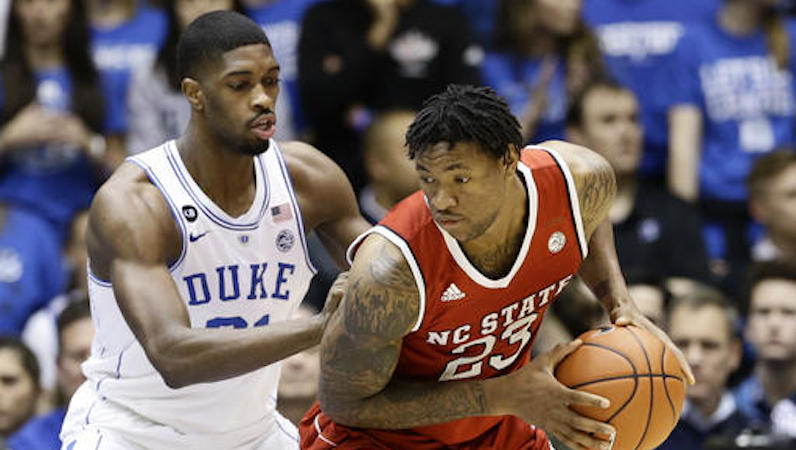There was a great deal of surprise Tuesday evening when it hit the Internet that NC State freshman forward Ted Kapita filed as an early entrant for the 2017 NBA Draft. Kapita appeared in just 26 games for an NC State team that finished with a losing record.
Ted Kapita did, however, do some productive things for the Wolfpack this year; do not look at just the box score stats. Here is a deeper dive into where and how Kapita excelled, and why that makes him, at the least, an intriguing prospect. If Kapita suits up for NC State next season, Kevin Keatts has an under-the-radar offensive talent on his hands, too.
Half-court force, seriously
While Ted Kapita saw only limited time during his freshman season, he was rather productive when on the floor. In fact, according to Synergy Sports, Kapita was one of the most efficient offensive players in the ACC this season — specifically in the half-court setting. Kapita produced 1.01 points per possession and shot 62.3 percent from the field on half-court possessions.
When Kapita faced man-to-man defense, specifically, he was even more effective. Per Synergy, Kapita scored 1.07 points per possession — on 65.4 percent shooting — against half-court man-to-man defense.
There were 127 ACC players, according to Synergy, that used at least 50 possessions against half-court man-to-man defense in 2016-17. Of that group, Kapita ranks No. 9 in points per possession and second in field goal percentage. If not for a ghastly turnover rate — 23.5 percent — that overall efficiency number would be even higher, too.
You will find the usual suspects at the top of this list: Luke Kennard (No. 3), John Collins (No. 4) and Bonzie Colson (No. 6). That is the company Kapita is in here.
This is why Kapita, who played just 328 minutes, recorded an impressive offensive rating of 110 points per 100 possessions, according to KenPom. That was the second best rating on NC State’s roster — behind only guard Terry Henderson.
Cleaning the glass
So, what did exactly Kapita do that was so impactful? Well, he was dynamite at scoring on offensive rebounds. Kapita grabbed better than 10 percent of the available offensive boards while on the court. According to Synergy, Kapita shot 80 percent (12-of-15) on put-backs following an offensive rebound. He scored 1.46 points per said possessions, too, which ranked No. 3 in the ACC (players with at least 20 possessions). In a very limited sample, this figure was better than Collins, Kennedy Meek and Jonathan Isaac. Two of those players are locks to be drafted in the first round. Again, not bad company, huh?
In general, Kapita was sturdy around the basket. Per Synergy, Kapita shot 74.4 percent on non-post-up possessions at the hoop; he scored 1.56 points per possession, which ranks No. 18 in Division I (minimum 30 possessions).
Kapita scored a career-high 17 points against St. Francis, but his best game — easily — came in the win at Duke. Dennis Smith Jr. was the story that night — and rightfully so — but what Kapita did was also excellent: 19 minutes, 14 points, 10 rebounds and just one turnover. It was the lone double-double of Kapita’s freshman season. Kapita grabbed 30.1 percent of the available rebounds while on the court that night, too.
Long way to go, though
Look, all of these numbers are really nice, but they do come with the necessary small sample size caveat. Mark Gottfried probably should have found more playing time for Kapita, but that is water under the bridge now; he is no longer the coach, and this is all the data we have to go on.
Kapita has no range on his jumper, and recorded just nine assists in 2016-17. The 6-8 forward can score around the hoop, but outside of that he is rather limited. Kapita has a ton of potential, but he clearly needs a lot of work, too.
If he does in fact return to NC State, though, there is clearly some positive stuff to build for Keatts and the Wolfpack to build up in 2017-18. A duo of Kapita and Abdul-Malik Abu could really be a force on the glass and at the rim.

















